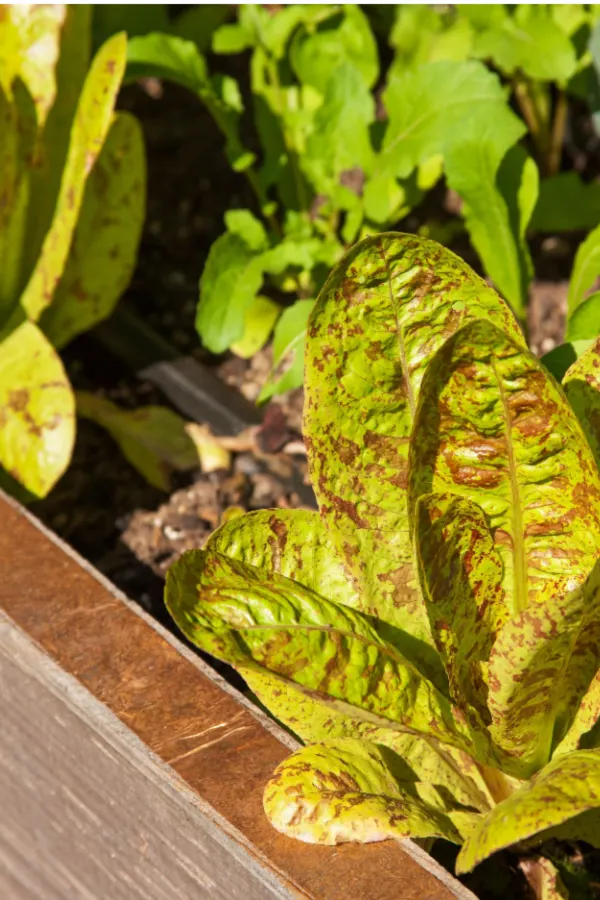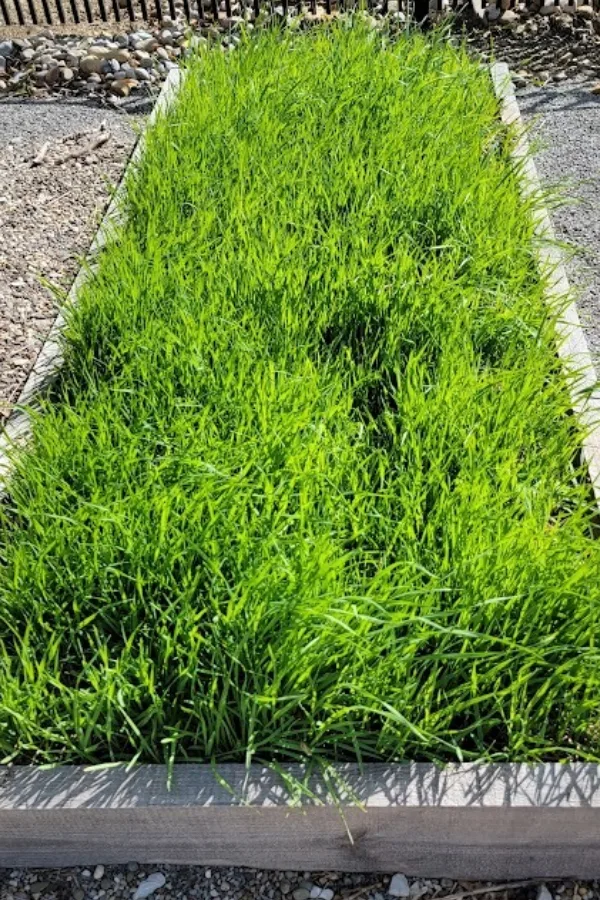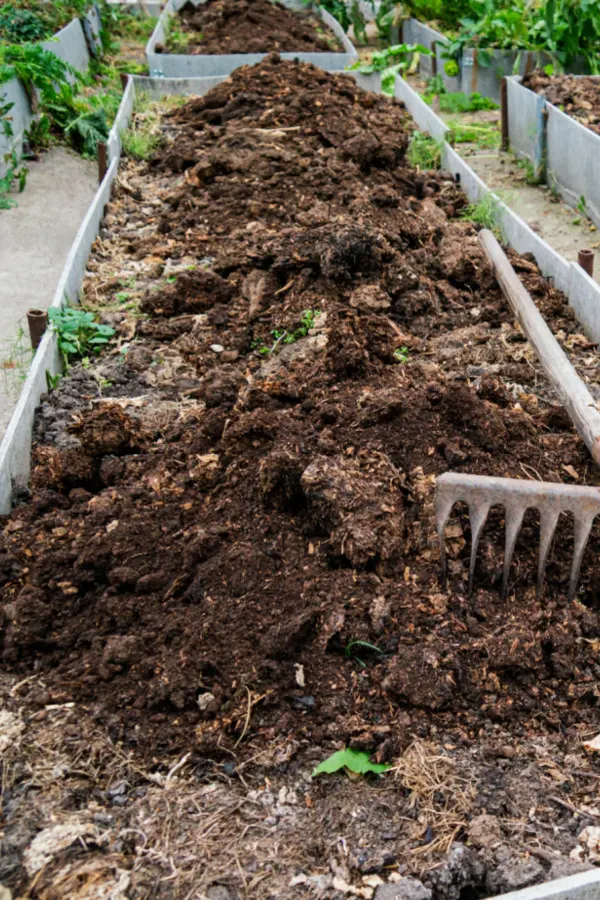Fall is the time to prepare, protect and recharge the soil in your raised beds – not just to get your beds and soil ready for winter – but to set the stage for your best growing season ever next year!
Raised beds have become more popular than ever for growing vegetables, herbs, flowers and more. Not only are they perfect for gardeners with limited growing space, they are also great for reducing some of the tougher chores of gardening – like weeding, watering and even harvesting.
Let’s face it, raised beds are easier to maintain than a traditional garden. But as wonderful as they can be, they still need attention from time to time. Especially when it comes to recharging the soil within their walls each and every year.
Why Recharging Raised Bed Soil Is So Important – How To Prepare, Protect & Recharge Raised Bed Soil
Whether growing vegetable plants, herbs, or flowering annuals, the plants that grow in raised beds are constantly taking nutrients from the soil. In addition to absorbing the soil’s energy, as the plants grow, they also break down much of the soil’s structure and vitality.
At the end of a growing season, this is exactly why the soil in raised beds is often cracked, dry and lifeless. And if that wasn’t bad enough, winter will arrive soon and if the beds are left unprotected, it too will take it’s toll on what is left of the soil’s strength.
Leaving your raised bed soil unprotected through the winter months is a recipe for disaster. Not only can weeds and weed seeds take over, but wind, snow, rain and ice can whisk away power from the soil as well.
But here is the good news, with just a little work this fall – you can not only recharge and revitalize your tired soil, but also protect it from the upcoming winter. And when next spring rolls around, your raised bed soil will be more than ready to grow better than ever!

How To Prepare, Protect & Recharge Raised Bed Soil Before Winter
Step 1 – Pulling Old Plants
When it comes to raised bed maintenance in the fall, it all starts with clearing away old plants. In fact, the quicker you remove spent vegetable plants, annual flowers and herbs, the better. Plants left to decay in raised beds create a myriad of issues for you and your soil.
For starters, the decaying stems, roots and foliage are an easy place for pests and disease to find a home. Even worse, old plants left in the soil drop hundreds of seeds from rotting fruits and flower heads. Seeds that then become next year’s weeding nightmare!
As soon as plants begin to fail, remove them from the soil – roots and all. It’s important to take out the roots because they too can harbor pests and disease. Also take the time to remove old fruit or seed heads that may have dropped to the soil below.
One final note on clearing, if you happen to be growing perennials in your raised beds, now is the time to cut them back. Just as with annuals, leaving the foliage up all winter will provide cover for pests. Once cut back, finish by covering any perennials with a few inches of protective mulch.
Giving Life Back To Your Soil – How To Prepare, Protect & Recharge Raised Bed Soil
Now that your plants have been cleared from the growing space, it’s all about recharging and revitalizing the soil!
As we talked about at the beginning of the article, it is extremely important to add nutrients back into the soil every year. And fall just happens to be the perfect time to tackle the chore. With raised beds, there are actually several great ways to accomplish this – whether with a cover crop, compost or even aged manure!

Recharging With A Cover Crop – How To Prepare, Protect & Recharge Raised Bed Soil
One of the easiest ways to recharge the soil in raised beds is with a no-till cover crop. And when it comes to great no-till crops for raised beds, two of the best choices are oats and peas.
Oats and peas germinate quickly in the fall. They fill in with a thick covering of foliage that protects soil from weeds, weed seeds and erosion. Down deep, the roots grow to open up air channels and break up hard soils.
Both oats and peas die off with the first hard frost. But their foliage can remain to protect the soil until spring. And when that warmer weather arrives you can allow the spent material to decay and plant right through it. Affiliate Product Link : Peas & Oats Cover Crop Seed Combo
Using Compost To Recharge Raised Bed Soil
One of the best ways of all to power up your soil is with a top dressing of compost. Compost is teeming with nutrients. By simply covering your raised beds with a few inches of compost in the fall, you can re-power your soil with ease.

There is no need to dig in the compost. In fact it is far better to not dig it in and mix it at this point. Why? Because by simply laying a few inches of compost on top, the layer acts as a base layer of mulch over the existing soil.
As the compost breaks down over winter, it slowly leaches its nutrients down into the soil. To finish off your beds, all that is left is to add a final layer of organic mulch on top of the compost to add total protection.
For this, leaves, grass clippings or straw work great as a final cover. This will keep both the soil and compost layer from blowing or eroding away, and when it comes to the leaves and grass clippings, they too will leach nutrients in to the soil while protecting it. Then in the spring – you can mix them all into the soil.
Aged Manure / Composted Manure / Fresh Manure – How To Prepare, Protect & Recharge Raised Bed Soil
As an alternative to compost, you can also layer a few inches of aged manure or composted manure into your beds in the fall. Chicken, rabbit, horse, goat and cow manure are all great choices for this.
Aged or composted manure is one of the best choices of all when it comes to using manure. Both of these are available in bags and do not have the pungent odor of fresh manure. A few inches of manure spread on the beds is great for this.

You can also use more “fresh” manure in the fall if you don’t have plants overwintering in the beds. There is no worry of burning plants next spring as it will have plenty of time over the winter to break down. With fresher manure, you will want to dig it into the soil. It will help it break down faster and bury any odor as well. This is a great option for those who raise backyard chickens.
Cover The Manure
Just as with compost, you will want to cover the manure with straw, leaves or grass clippings. This will help protect it from erosion and the nutrients leaching away through the winter.
If all else fails, you can also cover your beds with a tarp or plastic sheet. At the very least, it will keep weeds and weed seeds out, and prevent erosion too.
Here is to protecting your raised beds this fall for the long winter ahead. And, to setting the stage for an amazing raised bed garden next spring and summer. Happy Gardening! Jim and Mary.
Jim and Mary Competti have been writing gardening, DIY and recipe articles and books for over 15 years from their 46 acre Ohio farm. The two are frequent speakers on all things gardening and love to travel in their spare time.
As always, feel free to email us at thefarm@owgarden.com with comments, questions, or to simply say hello! You can sign up for our free email list in the subscribe now box in the middle of this article. Follow us on Facebook here : OWG Facebook. This article may contain affiliate links.

